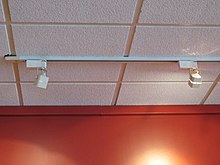
An electromagnetic coil is an electrical conductor such as a wire in the shape of a coil. Electromagnetic coils are used in electrical engineering, in applications where electric currents interact with magnetic fields, in devices such as electric motors, generators, inductors, electromagnets, transformers, sensor coils such as in medical FMRi imaging devices with coils going upto 3-7 and even higher Tesla. Either an electric current is passed through the wire of the coil to generate a magnetic field, or conversely, an external time-varying magnetic field through the interior of the coil generates an EMF (voltage) in the conductor.

Alternating current (AC) is an electric current that periodically reverses direction and changes its magnitude continuously with time, in contrast to direct current (DC), which flows only in one direction. Alternating current is the form in which electric power is delivered to businesses and residences, and it is the form of electrical energy that consumers typically use when they plug kitchen appliances, televisions, fans and electric lamps into a wall socket. The abbreviations AC and DC are often used to mean simply alternating and direct, respectively, as when they modify current or voltage.
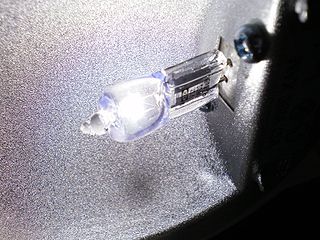
A halogen lamp is an incandescent lamp consisting of a tungsten filament sealed in a compact transparent envelope that is filled with a mixture of an inert gas and a small amount of a halogen, such as iodine or bromine. The combination of the halogen gas and the tungsten filament produces a halogen-cycle chemical reaction, which redeposits evaporated tungsten on the filament, increasing its life and maintaining the clarity of the envelope. This allows the filament to operate at a higher temperature than a standard incandescent lamp of similar power and operating life; this also produces light with higher luminous efficacy and color temperature. The small size of halogen lamps permits their use in compact optical systems for projectors and illumination. The small glass envelope may be enclosed in a much larger outer glass bulb, which has a lower temperature, protects the inner bulb from contamination, and makes the bulb mechanically more similar to a conventional lamp.
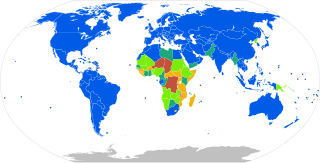
Mains electricity or utility power, grid power, domestic power, and wall power, or, in some parts of Canada, hydro, is a general-purpose alternating-current (AC) electric power supply. It is the form of electrical power that is delivered to homes and businesses through the electrical grid in many parts of the world. People use this electricity to power everyday items by plugging them into a wall outlet.

Lighting or illumination is the deliberate use of light to achieve practical or aesthetic effects. Lighting includes the use of both artificial light sources like lamps and light fixtures, as well as natural illumination by capturing daylight. Daylighting is sometimes used as the main source of light during daytime in buildings. This can save energy in place of using artificial lighting, which represents a major component of energy consumption in buildings. Proper lighting can enhance task performance, improve the appearance of an area, or have positive psychological effects on occupants.

A power supply is an electrical device that supplies electric power to an electrical load. The main purpose of a power supply is to convert electric current from a source to the correct voltage, current, and frequency to power the load. As a result, power supplies are sometimes referred to as electric power converters. Some power supplies are separate standalone pieces of equipment, while others are built into the load appliances that they power. Examples of the latter include power supplies found in desktop computers and consumer electronics devices. Other functions that power supplies may perform include limiting the current drawn by the load to safe levels, shutting off the current in the event of an electrical fault, power conditioning to prevent electronic noise or voltage surges on the input from reaching the load, power-factor correction, and storing energy so it can continue to power the load in the event of a temporary interruption in the source power.
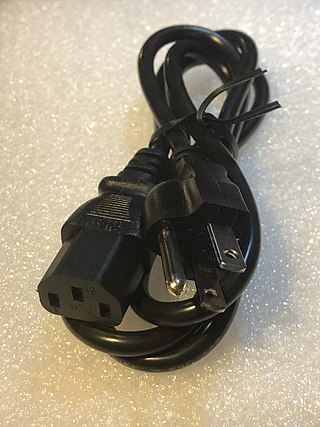
A power cord, line cord, or mains cable is an electrical cable that temporarily connects an appliance to the mains electricity supply via a wall socket or extension cord. The terms are generally used for cables using a power plug to connect to a single-phase alternating current power source at the local line voltage. The terms power cable, mains lead, flex or kettle lead are also used. A lamp cord is a light-weight, ungrounded, single-insulated two-wire cord used for small loads such as a table or floor lamp.
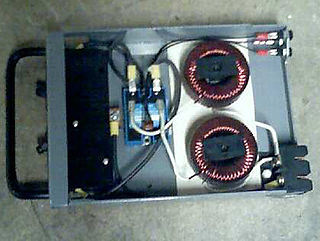
A dimmer is a device connected to a light fixture and used to lower the brightness of the light. By changing the voltage waveform applied to the lamp, it is possible to lower the intensity of the light output. Although variable-voltage devices are used for various purposes, the term dimmer is generally reserved for those intended to control light output from resistive incandescent, halogen, and compact fluorescent lamps (CFLs) and light-emitting diodes (LEDs). More specialized equipment is needed to dim fluorescent, mercury-vapor, solid-state, and other arc lighting.
Electrical wiring in North America follows the regulations and standards applicable at the installation location. It is also designed to provide proper function, and is also influenced by history and traditions of the location installation.

A split-phase or single-phase three-wire system is a type of single-phase electric power distribution. It is the alternating current (AC) equivalent of the original Edison Machine Works three-wire direct-current system. It primary advantage is that, for a given capacity of a distribution system, it saves conductor material over a single-ended single-phase system.

Electrical wiring is an electrical installation of cabling and associated devices such as switches, distribution boards, sockets, and light fittings in a structure.
Electrical wiring in the United Kingdom is commonly understood to be an electrical installation for operation by end users within domestic, commercial, industrial, and other buildings, and also in special installations and locations, such as marinas or caravan parks. It does not normally cover the transmission or distribution of electricity to them.

An emergency light is a battery-backed lighting device that switches on automatically when a building experiences a power outage.

An electrical ballast is a device placed in series with a load to limit the amount of current in an electrical circuit.

A light fixture, light fitting, or luminaire is an electrical lighting device containing one or more light sources, such as lamps, and all the accessory components required for its operation to provide illumination to the environment. All light fixtures have a fixture body and one or more lamps. The lamps may be in sockets for easy replacement—or, in the case of some LED fixtures, hard-wired in place.
0–10 V is one of the first and simplest electronic lighting control signaling systems, used as an early fluorescent dimming system. Simply put, the control signal is a DC voltage that varies between zero and ten volts. Two standards are recognized: current sourcing and current sinking.
Digital Serial Interface (DSI) is a protocol for the controlling of lighting in buildings. It was created in 1991 by Austrian company Tridonic and is based on Manchester-coded 8-bit protocol, data rate of 1200 baud, 1 start bit, 8 data bits, 4 stop bits, and is the basis of the more sophisticated protocol Digital Addressable Lighting Interface (DALI).
C-Bus is a communications protocol based on a seven-layer OSI model for home and building automation that can handle cable lengths up to 1000 metres using Cat-5 cable. It is used in Australia, New Zealand, Asia, the Middle East, Russia, United States, South Africa, the UK and, other parts of Europe including Greece and Romania. C-Bus was created by Clipsal Australia's Clipsal Integrated Systems division for use with its brand of home automation and building lighting control system. C-Bus has been briefly available in the United States but Schneider Electric has now discontinued sales in the United States.
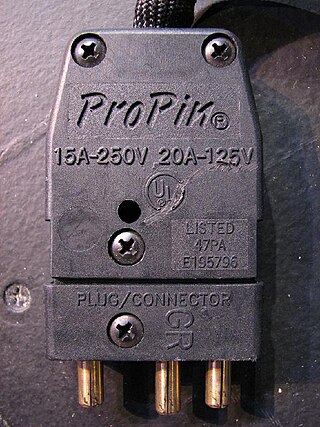
A stage pin connector, also known as a grounded stage pin (GSP), grounded pin connector (GPC) or theater paddle (TP), is a standard cable type for theatrical lighting in North America and in many countries in the theatre world.

A multifaceted reflector light bulb is a reflector housing format for halogen as well as some LED and fluorescent lamps. MR lamps were originally designed for use in slide projectors, but see use in residential lighting and retail lighting as well. They are suited to applications that require directional lighting such as track lighting, recessed ceiling lights, desk lamps, pendant fixtures, landscape lighting, retail display lighting, and bicycle headlights. MR lamps are designated by symbols such as MR16 where the diameter is represented by numerals indicating units of eighths of an inch. Common sizes for general lighting are MR16 and MR11, with MR20 and MR8 used in specialty applications. Many run on low voltage rather than mains voltage alternating current so require a power supply.
